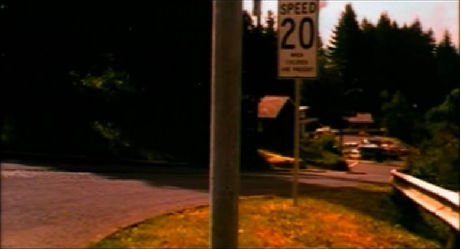This short essay, originally published in December 1993, was the first time I was ever commissioned to write liner notes for a CD — in this case, the soundtrack music for Jon Jost’s The Bed You Sleep In, composed by Erling Wold and released by The Table of the Elements. (The second time was this month, July 2019, when I was invited to write a short essay for a CD in the U.K. of Carlos Santos’ soundtrack score for Pere Portabella’s masterpiece Vampir Cuadecuc.) — J.R.
The Bed You Sleep In is the twelfth feature of Jon Jost, one of the most independent of all American independent filmmakers, and in more ways than one. It can be regarded as a kind of summary of his preceding work. From a conventional standpoint, Jost’s first eleven features, made over the past two decades, fall into two loose categories: fiction (Angel City, Last Chants for a Slow Dance, Chameleon, Slow Moves, Bell Diamond, Rembrandt Laughing, All the Vermeers in New York, and Sure Fire) and personal, experimental essays (Speaking Directly, Stagefright, and uncommon senses). But Jost is far from conventional, and a closer work at his work reveals that such neat divisions can’t always be made. Most of the “fiction” films, including The Bed You Sleep In, combine documentary material about where they were shot with improvised storylines and dialogue furnished by the actors in collaboration with Jost.
These films focus on specific forms of all-American dementia: isolation and violence, crumbling economies, and communities and family units that come apart through contagious paranoid mistrust. In The Bed You Sleep In – shot in Toledo, Oregon in the early 90s – the protagonist, Ray (Tom Blair), more sympathetic and settled than most previous Jost heroes, owns a lumber mill employing 60 workers, even if it has to import its timber from -– and sell its products to -– other countries. But if the consequences of Ray’s situation prove to be bleak, this time they can’t so confidently and exclusively be traced back to his own character. While he can be charged with ecological rape, and winds up being accused by his own teenage daughter of sexual abuse, the film takes pains not to establish whether the second charge is true or false, and even the first charge can scarcely account for the full tragedy that unfolds. Here the sickness becomes more pervasive, complex, and mysterious, and no simple finger-pointing can entirely localize it.
Born in Chicago in 1943, Jost was raised in a military family that lived in Georgia, Kansas, Japan, Italy, Germany, and Virginia. He started making short films after he was expelled from college in 1963, and two years later was imprisoned by the federal government for burning his draft card and refusing to serve in Vietnam, a term that lasted two years and three months. (Ironically, this may have been the longest period since his teens that he lived at a fixed address; when I first met him in 1977 he was mainly living out of his car, camera equipment and all.)
Perhaps the first significant and sustained use of music in a Jost film is the use of country-western songs he composed and helped to perform in Last Chants for a Slow Dance (1977), similar to those used in Slow Moves six years later. In both cases, the songs are explicitly linked to a contemplative mood, and are generally used in passages that have only a casual relation to the narrative-emotional pedal points. They invite us to mull over settings and situations rather than lock ourselves into the compulsive continuity of a storyline. The more elaborate scores of Jon E. English, in such later features as Rembrandt Laughing (1988) and All the Vermeers in New York (1990) – emplying respectively classical and jazz elements – function similarly, and Erling Wold’s score for The Bed You Sleep In, combining folk and classical elements, follows the same pattern.
Characteristically, this score is initially associated with physical settings more than the intermittent storyline, functioning meditatively rather than dramatically: one often feels that the landscapes are watching the characters rather than the other way around. But as the film progresses, and the ecological and human themes figure increasingly as mirror reflections of one another, the music accompanies narrative as well as non-narrative stretches, which finally come together in two extended sequences that follow the doomed hero in his car -– first driving home, where further tragedy awaits him, and then driving to his favorite spot for fly-fishing, where he meets his own end. The first sequence shows only what he sees, a road eerily duplicating itself in ghostly double exposure; the second shows passing tree branches superimposed over his face behind the wheel. Both combine with the music to convey the beauty and witness of nature, offering no escape or respite from the malaise of a disintegrating culture.
JONATHAN ROSENBAUM







